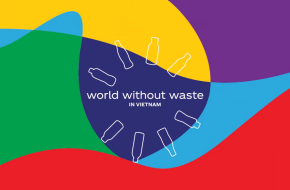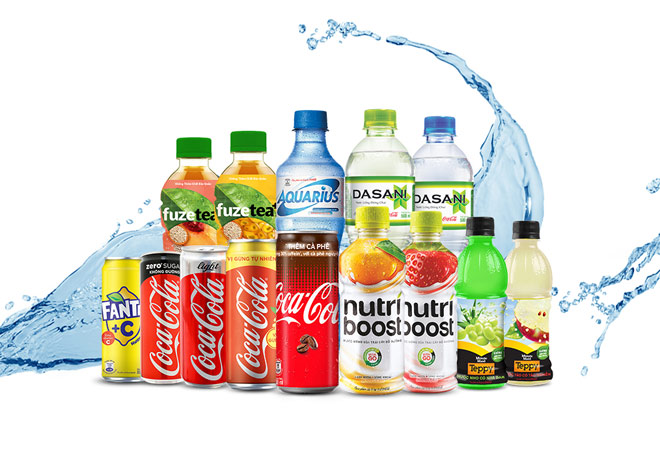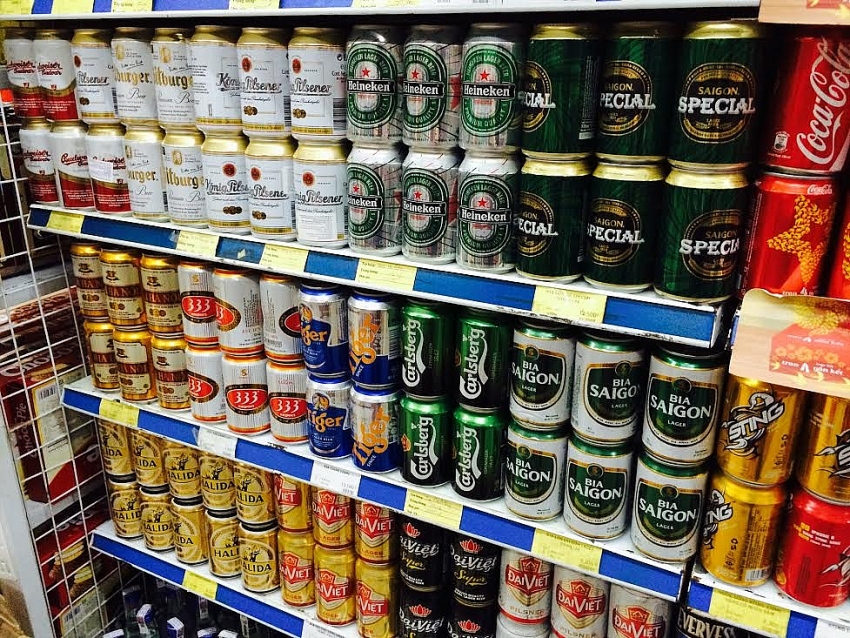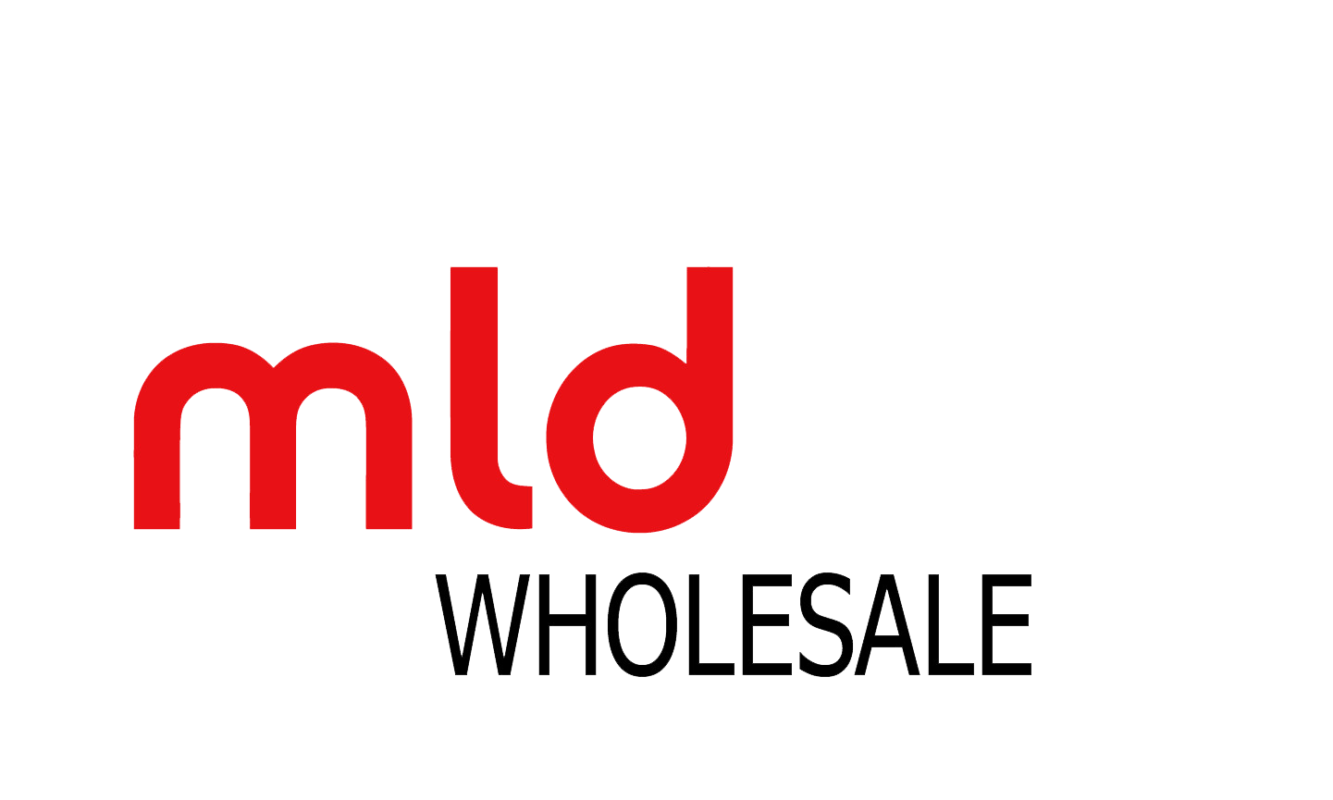Vietnam’s beverage industry is strengthened rapidly, accompanied by a boost in economic growth, advantageous demographics, rising tourism and higher income middle-class. With the growth rate of 6% annually, the sector is one the driving industry of Vietnam’s economy, has the highest production value and the 2nd highest total revenue.
Vietnam is one of the highest beverage consuming market as well. Compared to 2010, Vietnam’s alcohol consumption increased by nearly 95%, ranks first in the world, and doubles the second-ranking country- India, and 16 times more than the United States.
Beer segment is the strongest in Vietnam beverage industry. This sector only accounts for more than a half of beverage revenue, leading by Sabeco, which takes over 40% of the market share. However, the company had been acquired by Thailand giant – ThaiBev in the end of 2017, making this sector mainly controlled by a foreign firm.
Vietnamese government plans to decrease its stake in state-owned enterprises to encourage the country’s private sector, supporting the positive outlook for Vietnam’s beverage industry. This, accompanied by Vietnam’s membership of WTO and a number of free trade deals such as CPTPP and the EVFTA, aims to attract multinational companies to invest in the drinks sector as well as generate opportunities for Vietnamese companies to expand their exports.

Trends transforming the beverage industry
Alcoholic beverages (beer, wine and spir – its) are the largest accounting for more than 70% of the total retail of the beverage indus – try. Despite receiving a modest annual growth rate of 3.5% by 2020, the beer industry is considered to have a great opportunity to invest because the country’s consumption is in the top 10 of Asia and a favorable average per capita consumption of 42 liters by 2020.
Vietnamese consumers are considered to be more and more health-conscious in Southeast Asia, calling for manufacturers to start rethinking market offerings that calibrate towards healthier product portfolio such as fruit juices or herbal teas. This shown through the fall in revenue growth of carbonated soft drinks in Vietnam, from 27.9% in 2011 to 9.3% in 2019 and is forecasted to further fall to 5.7% by 2023.
For alcohol consumption, Vietnam records the highest increase per capita in the world, with 4.6 billion liters consumed in 2019, accounted for VND 44.3 billion, which appears to be a potential market for foreign players. The increases in GDP were in sync with the increases in adult’s alcohol per capita consumption, due to the up-growth in the economy, as well as the prolonged period of a weak alcohol control policy.

Value Chain Analysis
Many multi-national companies and big groups in the sector are using new technologies to create environmental friendly products, contributing to easing waste.
Due to the income gap between urban and rural areas, the consumption of wine and spirits is concentrated in urban centers such as Hanoi, Ho Chi Minh City and Da Nang.
Of the selling price, 51% of the selling price goes to manufacturers, 34.6% are taxes such as VAT, special consumption tax, … retailers are entitled to about 9.7%.
The UN sustainable development Goals and health-conscious awareness impact directly on companies’ branding, consumer choices and cost of production.

Non-alcoholic Drinks
Although they are the only two major foreign firms in the segment, Coca-cola and Suntory Pepsico largely dominate the market by taking over 64% of the market share, following by Tan Hiep Phat and Trung Nguyen – two big domestic players. The reasons behind are due to:
Small production scale Obsolete manufacturing equipment (accounts for 52% of all firms)
Revenue of this segment is projected amount to USD 7.098 million in 2020 with the expected growth rate of 6.5% until 2023, mostly accounted for soft drinks. The consumption per capita is growing rapidly under the positive influence of consumer choices. Young generation under 24-year-old taking over around 40 percent of the country’s population demonstrates sustainable growth in the soft drink sector. The tendency of a healthy lifestyle will significantly change the appearance of the industry when 83 percent of consumers choosing nutritious and healthier products over sugary ones.
With the fastest growing in the fast-moving consumer goods (FMCG) industry, the volume sales of soft drinks and carbonated soft drinks in Vietnam is likely to reach 3.3 billion and 1.5 billion liters in 2020, respectively.


Beer Consumption
Vietnam is well-known for beer drinking culture. Currently, the country is the biggest beer market in Southeast Asia, 3rd in Asia and 15th in the world for beer consumption. The rapid growth speed of this market attracts the covetous glances of foreign investors, turning this playground into a fierce battle.
Beer revenue in 2019 is USD 7.7 billion and is expected to reach USD 8.2 billion in 2020 with an annual growth of 5.5% in the period of 2019 – 2023. This growth rate is estimated to be higher, at 6-7%. The consumption growth rate is remarkable and constant in a long period, along with that is the developing population, Vietnam’s beer industry combined all the most favorable criteria for sustainable development.

Market shares
However, it is not simple to enter this market. Only the investment units based on the value chain from materials, logistics to distribution systems, along with strong financial resources for new marketing strategies to win in this race. Big players like Sabeco, Habeco, Carlsberg and Heineken takes over 90% of the market share. Rivalry in this segment is relatively intense.
Other Alcoholic Drinks
In comparison with most revenue market in the world, Vietnam’s wine and spirit segment is relatively humble. The growth rate keeps at around 4% yearly. Beside wine and spirits production, revenue accounts mostly on Cider, Perry and Rice Wine. According to WHO estimation, unofficial / non-statistical alcohol, mostly self-brewed alcohol, accounts for 64% of total alcohol consumption. These wines usually really strong (up to 40 vol%), and are widely consumed and popularized in non-central cities. The chart below shows the average alcohol consumption by liter per person of some big cities in Vietnam.

